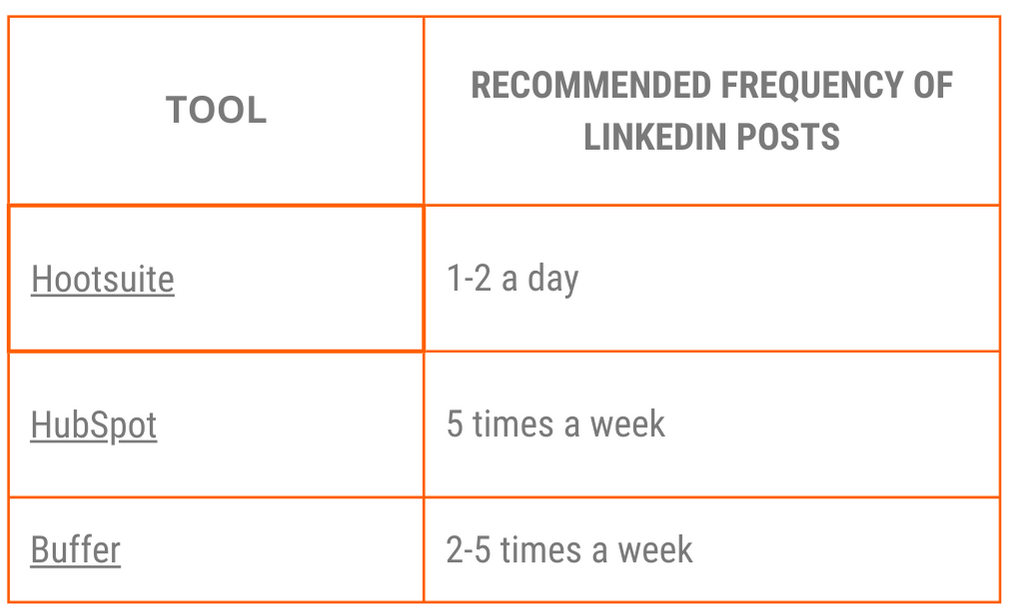Two of the most common client questions I receive when outlining a social media strategy are, “Which platforms are best?” and “How often should we be posting?” These questions leave me describing “the algorithm” to clients.
The relationship between the infamous platform-specific algorithms and a brand’s posting frequency is an intricate one.
Each social media platform algorithm is best visualized as an abacus. Imagine a deity sliding points back and forth for a post based on a set of criteria.
This criteria includes followers, engagement on previous posts, ad budgets allocated to the brand’s social media account, etc. Ultimately what determines the content that appears in users’ feeds, is factored and decided on by this ever-shifting platform-specific algorithm.
Our troupe has observed a few rules that have held true over the years and are factors in most social media platform algorithms. These “truths” include heightened post reach for brands with content the algorithm has decided is quality content, from a brand that consistently posts to an audience while they are available to engage with posts. This is an obviously overly simplified statement, yet at the end of the day social media platforms want their feeds to engage users and keep them scrolling. If you are curious about diving into social media algorithms for 2024, you can find tips and tricks for each major platform here: Facebook, Instagram, and LinkedIn.
One thing our troupe always knows is true is that it is critical that post frequency is considered when planning social media content. This should be considered in two categories:
1. Overall post frequency currently required by the specific platform to which your brand is posting
2. Campaign-specific post frequency
To mitigate conflicting and sometimes vague guidelines being published by reputable social media scheduling tools, each client’s industry and previous posting data needs to be taken into consideration. We take each account’s previous 365 days of post data out of LinkedIn and put it into excel. Here’s how to do that.
After the data has been sorted for engagement, we look for natural weekly “drop off” frequencies. For instance, if a company previously posted 20 times per week but all the posts after the sixth post saw lower engagement, we will adjust the company page posting frequency to five times a week. Often this data doesn’t exist because a company has been previously posting under all of the recommended posting frequencies. In this case, we look at their competitor’s posting frequency alongside the recommendations and start with a “heavy” post frequency for a quarter, then evaluate where/if engagement starts to drop off.
Once we have months of data and the platform’s algorithm has recognized that a client’s brand is posting consistently, we find our growth in engagement and post reach hit a stride and we can truly start measuring our social media successes from a website KPI standpoint. Recently, a client with four brands had to reduce the posting frequency for two of the brands due to budget constraints. The data below shows how various website KPIs were impacted by those brands shifting from daily or two times a day posting frequency in Q1, Q2 and Q3 of 2023 to a once or twice a week frequency in Q4 2023.

In short? How relevant is your posting frequency for the algorithm? Very much so. Our recommendations are as follows:
1) Post frequently, but not excessively
Pull your post engagement data and check in on current algorithm standards often! Remember, posting consistently tells the algorithm your profile is active and engaged. But if your brand posts too often—especially in short periods of time—this can be perceived by platform algorithms as spamming behavior, which tends to generate much less visibility. Remember #2 above regarding campaign-specific posting frequencies? We often have clients with big news, a sale, or big media coverage ask our team to keep posting about a campaign-specific topic. Check in on your data frequently and reduce the frequency of any campaign specific posts immediately when you start to see the audience disengage from the topic. No matter how good the news or sale is it won’t matter if your audience disengages and stops looking at your posts.
2) Don’t compromise quality over quantity
Consistency is important, but businesses should also focus on delivering high-quality content that resonates with their audience. Always ask yourself what value does this post bring? Does this post make my audience laugh, solve a problem for them, showcase my company’s expertise, etc. If you don’t have a reason to post it, don’t! Find alternative content to share.
3) Measure everything!
While consistent posting can help algorithms learn which types of content your audience engages with, analytics can help you open deeper conversations about your products and services that are uniquely resonating with your target audiences.
In the end, it all comes down to effectively knowing what your brand can talk about, and consistently posting authentic, engageable social media content that leads to consumer trust and ongoing relationships with your potential clients, current clients, employees and vendors.
If you want some guidance our team offers social media support services that range from our Juxt Learn webinars and weekly tips, to platform specific social media strategy audits and hands-on training for your in-house marketing team, to fully done for your social media programs where we post on your brand’s behalf and monitor engagement and replies. We would be happy to discuss next steps! Schedule a consultation with Lynsie here!
Written by Lynsie Slachetka || Chief Executive Juxtaposition Officer & Founder


